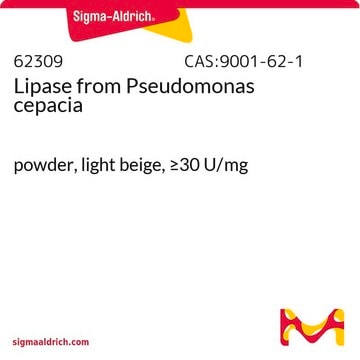P0359
Palmitoylethanolamide
≥98% (HPLC), powder, cannabinoid receptor agonist
Sinonimo/i:
N-(2-Hydroxyethyl)hexadecanamide, PEA, Palmidrol
About This Item
Prodotti consigliati
product name
Palmitoylethanolamide,
Forma fisica
powder
Temperatura di conservazione
−20°C
Stringa SMILE
CCCCCCCCCCCCCCCC(=O)NCCO
InChI
1S/C18H37NO2/c1-2-3-4-5-6-7-8-9-10-11-12-13-14-15-18(21)19-16-17-20/h20H,2-17H2,1H3,(H,19,21)
HXYVTAGFYLMHSO-UHFFFAOYSA-N
Informazioni sul gene
human ... CNR1(1268) , CNR2(1269)
rat ... Faah(29347)
Applicazioni
Azioni biochim/fisiol
Linkage
Avvertenze
Danger
Indicazioni di pericolo
Consigli di prudenza
Classi di pericolo
Aquatic Chronic 2 - Eye Dam. 1 - Skin Irrit. 2
Codice della classe di stoccaggio
13 - Non Combustible Solids
Classe di pericolosità dell'acqua (WGK)
WGK 2
Punto d’infiammabilità (°F)
Not applicable
Punto d’infiammabilità (°C)
Not applicable
Dispositivi di protezione individuale
Eyeshields, Gloves, type N95 (US)
Certificati d'analisi (COA)
Cerca il Certificati d'analisi (COA) digitando il numero di lotto/batch corrispondente. I numeri di lotto o di batch sono stampati sull'etichetta dei prodotti dopo la parola ‘Lotto’ o ‘Batch’.
Possiedi già questo prodotto?
I documenti relativi ai prodotti acquistati recentemente sono disponibili nell’Archivio dei documenti.
I clienti hanno visto anche
Il team dei nostri ricercatori vanta grande esperienza in tutte le aree della ricerca quali Life Science, scienza dei materiali, sintesi chimica, cromatografia, discipline analitiche, ecc..
Contatta l'Assistenza Tecnica.














